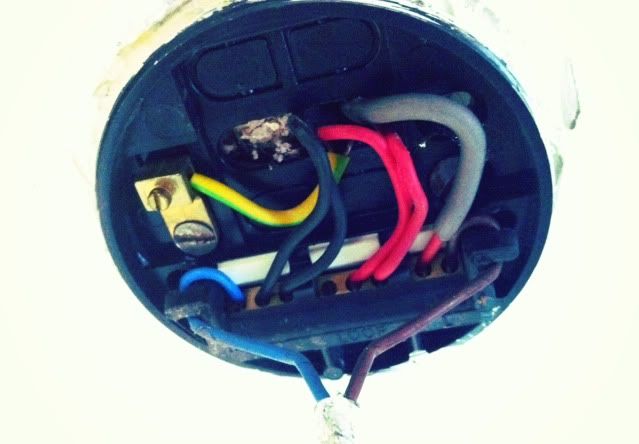We recently moved into a an oldish property (approx 1950) and it needs a fair bit of work. Fortunately (as we are a family of five - 3 young children) it was an ok state (lining paper on every wall to give the impression all was ok!). The electrics (compared to some of the places we viewed) are not too bad either (relatively modern, a couple of lights have been added with the latest colours) and there is sufficent sockets for the time being (not reg complient mind you!).
I'm slowly carrying out a rewire (will post seperate questions as and when!) and endeavour to comply with the regs etc...will also be adding networking/AV feeds whilst 'channeling' away. I have a couple of electrician friends who will complete the job (consumer end)...
...I digress...
I currently have a 2 gang lighting switch on the wall which feeds a downstairs and upstairs light (upstairs light is single switch on seperate lighting MCB - upstairs and downstairs).
I'm adding a porch light and want to add the switch into a new 3 gang.
So far I've channeled/fed the 1mm/1.5mm twin and earth from the outdoor light outside in the floorboards above and chiselled out the channel from the existing cable and switch (to add the switch cable from the new light/junction box.)
I am attaching a 4 way junction box from the existing cable and...that's where I'm up to.
I've opened up the existing light switch and have been confronted with this:


Initially a little bewildered, it looks like the the 3 gang switch I have purchased has a 'third' section seperated by a diagonal line I can use for the new switch - no common listed but I presume L = common and L1 = L2 and L2 = L3?
I can make out the three core and earth (yellow, blue and red) and twin and earth (the red and black) but there is also a red single cable in a thicker grey sleeve?? Is this the link between the downstairs switch and the upstairs light? The upstairs hall light does not control the downstairs hall light - pic of that switch here:


^^ Struggling to find where that grey sleeved cable terminates - the ceiling rose for the downstairs hall light?
Here's the new light switch - I'm hoping I can attach the new cable from the new junction box to the 'third' L, L1 and L2 on this switch and replicate the wiring from the old switch (I always take a pic when I open up switches...they're just spaghetti otherwise). Sound about right?
I've yet to open up the floorboards above so not sure how the cables are connected to the ceiling rose (will this evening and post a pic if needed), but given what I've seen in the existing switch I'm a little unsure which cable I break into for the new light/junction box.
Cheers.
I'm slowly carrying out a rewire (will post seperate questions as and when!) and endeavour to comply with the regs etc...will also be adding networking/AV feeds whilst 'channeling' away. I have a couple of electrician friends who will complete the job (consumer end)...
...I digress...
I currently have a 2 gang lighting switch on the wall which feeds a downstairs and upstairs light (upstairs light is single switch on seperate lighting MCB - upstairs and downstairs).
I'm adding a porch light and want to add the switch into a new 3 gang.
So far I've channeled/fed the 1mm/1.5mm twin and earth from the outdoor light outside in the floorboards above and chiselled out the channel from the existing cable and switch (to add the switch cable from the new light/junction box.)
I am attaching a 4 way junction box from the existing cable and...that's where I'm up to.
I've opened up the existing light switch and have been confronted with this:


Initially a little bewildered, it looks like the the 3 gang switch I have purchased has a 'third' section seperated by a diagonal line I can use for the new switch - no common listed but I presume L = common and L1 = L2 and L2 = L3?
I can make out the three core and earth (yellow, blue and red) and twin and earth (the red and black) but there is also a red single cable in a thicker grey sleeve?? Is this the link between the downstairs switch and the upstairs light? The upstairs hall light does not control the downstairs hall light - pic of that switch here:


^^ Struggling to find where that grey sleeved cable terminates - the ceiling rose for the downstairs hall light?
Here's the new light switch - I'm hoping I can attach the new cable from the new junction box to the 'third' L, L1 and L2 on this switch and replicate the wiring from the old switch (I always take a pic when I open up switches...they're just spaghetti otherwise). Sound about right?
I've yet to open up the floorboards above so not sure how the cables are connected to the ceiling rose (will this evening and post a pic if needed), but given what I've seen in the existing switch I'm a little unsure which cable I break into for the new light/junction box.
Cheers.



